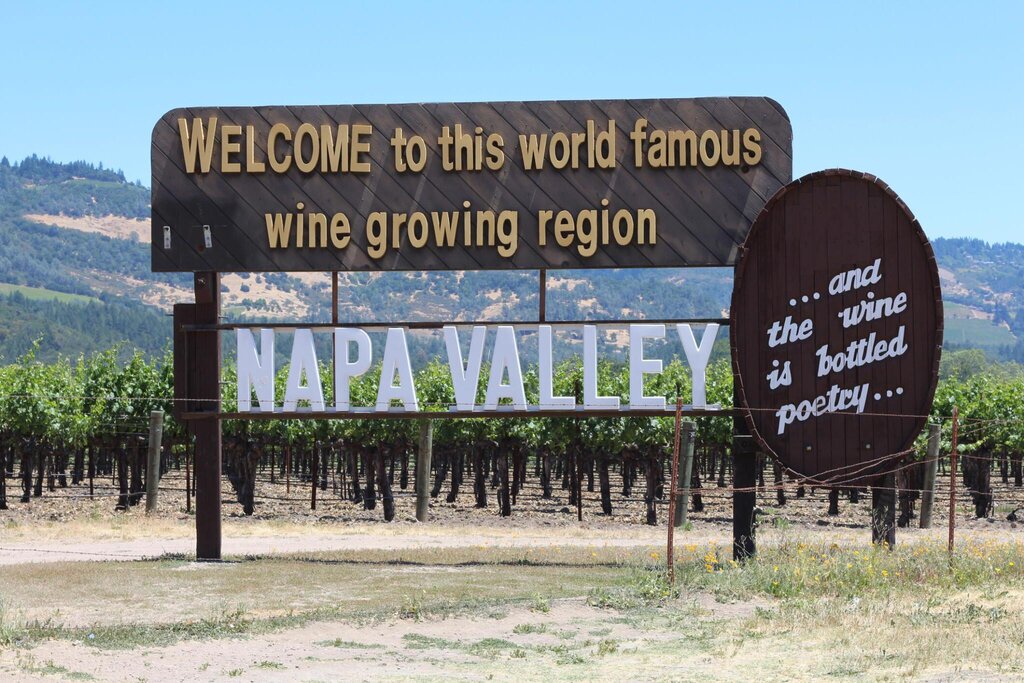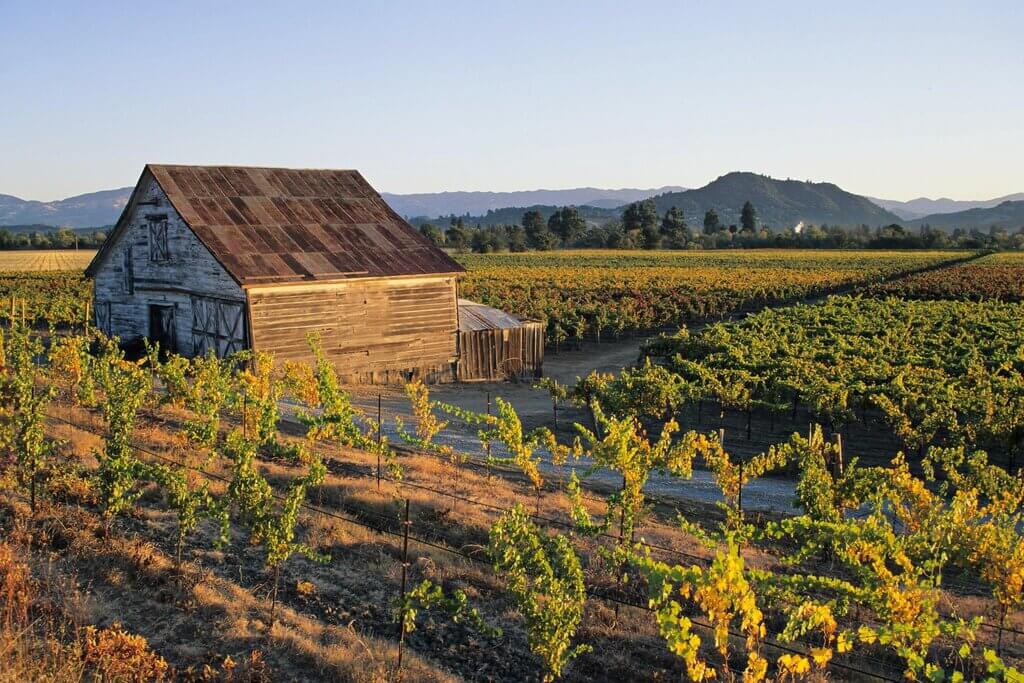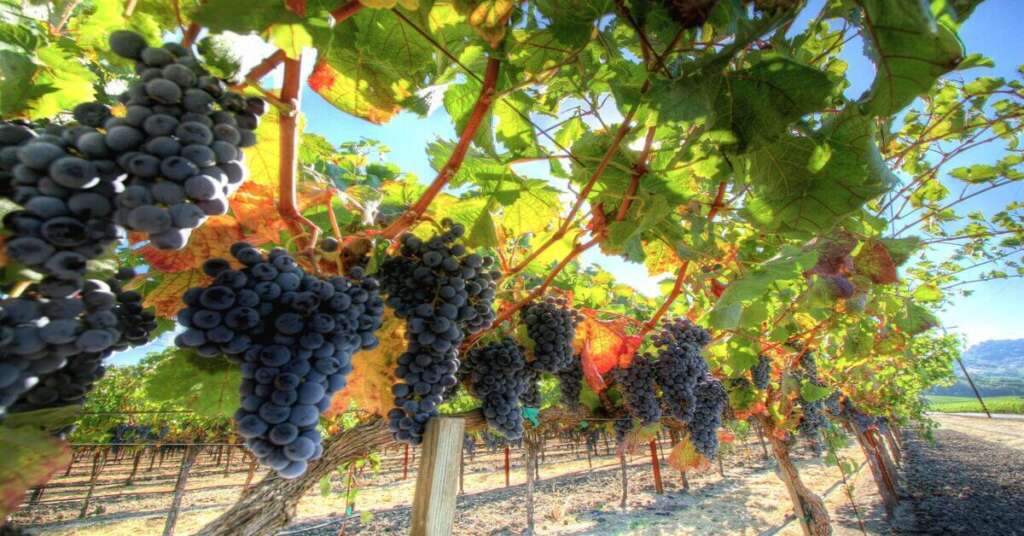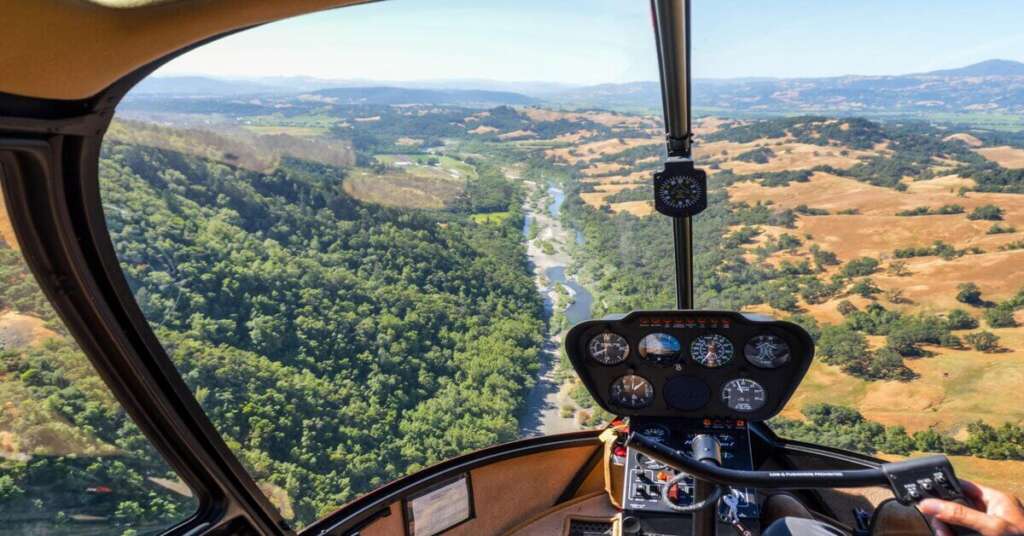California is home to some of the world’s best and most iconic wine regions. And Napa and Sonoma valleys reign supreme among them. Both are renowned for producing some of the finest American wines you’ll ever taste.
So when all is said and done in the Napa vs Sonoma debate, is one “better” than the other?
The short answer? No.
But what exactly sets these two famous regions apart? And what makes them similar?
I’ve had the pleasure of visiting both over the years. And let me tell you, they each have their own unique charm and strengths as wine destinations.
In this post, I’ll compare Napa vs Sonoma across a few key categories so you can decide which region best fits your wine travel style. I’ll also share plenty of tips for visiting each area based on my own experiences there.
So let’s dive in!
Napa vs Sonoma: The Basics


First, a quick overview of the key facts and stats on Napa and Sonoma:
Napa Valley
- Located just north of the San Francisco Bay Area
- Known for iconic, bold Cabernet Sauvignons
- Has just 16,000 acres of vineyards (though still makes 4% of USA wine)
- Receives less annual rainfall than Sonoma
- Home to nearly 500 wineries, many offering tours and tastings
Sonoma County
- Sprawls along the northern CA coast, west of Napa
- Cooler overall climate more suited to Pinot Noir and Chardonnay
- Over 60,000 acres of vineyards spread across diverse terrain
- Sees more rainfall due to coastal mountains
- Has over 425 wineries ranging from corporate giants to intimate estate vineyards
As you can see, despite their proximity, Napa and Sonoma have noticeable differences when it comes to their winemaking landscapes.
But there’s no clear winner or loser here—just two phenomenal regions that appeal to different travelers in their own way.
The Terroir: Soils, Elevation, Climate Differences
One major distinction between Napa vs Sonoma comes down to terroir—the environmental conditions that influence a wine’s character.
Soils
In general, Napa soils are more dominated by gravel, sand and volcanic matter. They tend to be well-drained and nutrient-poor.
Sonoma has a far wider array of soil types given its larger size. Key areas include:
- The Rossland soil in the Russian River Valley AVA is iron-rich and relatively fertile
- Dry Creek Valley has more volcanic, alluvial soils well-suited to Zinfandel
- Chalky, maritime soils in close proximity to the Pacific Ocean (like Fort Ross-Seaview AVA)
As you visit wineries, be sure to ask about how the soil impacts the flavors in that region’s wines. Those dry, volcanic Napa soils do wonders for concentrating bold Cabernet fruit!
Elevation
Napa vineyards are concentrated on the valley floor—generally below 400 feet in elevation. Though some do extend into the surrounding Mayacamas Mountains rising over 2,000 feet.
Sonoma has a far wider elevation range for its vineyards:
- Somehugging San Pablo Bay at sea level
- Russian River Valley averaging around 150-900 feet
- Small pockets in the Petaluma Gap and Fort Ross-Seaview AVAs exceeding 1,800 feet
Higher elevation Sonoma sites tend to grow cooler climate grapes like Pinot Noir and Chardonnay wonderfully. Lower elevations areas warmer temps for things like Cabernet, Zin and Syrah.
Climate
Speaking of temperature, Napa definitely beats Sonoma in that regard. The deep Napa Valley soaks up more sunlight and heat, acting like a natural oven.
- Napa gets nearly twice as many days over 95°F as Sonoma
- Sonoma is cooler on average by 5-10 degrees
- Coastal fog and breezes have a bigger influence on Sonoma
Lately climate change has compressed those temperature differences somewhat. But Napa still cooks up riper, more concentrated fruit flavors ideal for their big Cabernets.

The Grapes: Cabernet vs. Pinot
So how do those terroir differences actually impact the wine? In a word: tannins.
Napa’s bold, firmly tannic reds are world famous. Owing especially to near-perfect growing conditions for Cabernet Sauvignon—king of the Napa Valley. 75% of plantings here are Cabernet.
Sonoma grows 50+ grape varieties. But Pinot Noir and Chardonnay thrive in particular.
Pinot is a much more delicate grape. And the cooler Sonoma climate allows it to retain its brightness and aromatics, with softer tannins.
Hence why you’ll frequently see Napa Cabernet contrasted with Sonoma Pinot or Chardonnay in wine reviews.
But both regions do grow the full gamut. In Napa, roughly 10% of vines are Chardonnay, with the rest a mix of Merlot, Cab Franc and more. While over 25 Sonoma wineries also make excellent Cabernets on the valley floor.
Wine Prices & Production Scale
With big brand name recognition comes premium wine prices. And Napa collects plenty of both.
Out of the top 20 most expensive Cabernets sold at retail:
- 17 are from Napa
- Average cost over $140
Compare that to Sonoma Pinot Noirs, where even coveted Russian River and Sonoma Coast bottles top out around $70-80 on average.
Now, you can certainly find affordable options from Napa. But its hyper-premium, luxury image rings especially true when it comes to iconic producers like Screaming Eagle, Harlan, Scarecrow and Dominus.
On the flip side, many Sonoma wineries reach very high production numbers for the California wine market. Gallo as the largest case in point. Along with large operations like Kendall-Jackson, Rodney Strong, Jordan and others.
Napa does have its fair share of mass production too though. I’m looking at you, Charles Krug, Beringer and Clos du Val!
This diversity in wine pricing and volume makes both regions widely accessible for all budget ranges.
While Napa wines fetch higher prices on average, don’t assume Sonoma wines are inherently cheaper or lower quality. Pay attention to producers and vineyard sites over broad AVA designations for the best values.
Napa or Sonoma: Wine Styles & Flavor Profiles
At a basic level, you can count on Napa for deeply extracted, fruit-forward wines accented by oak. Contrasted by more delicate, earthy and elegant profiles from Sonoma.
But both regions do excel far beyond those stereotypes in some specific AVAs and vineyards worthy of highlighting:
Textbook Napa
- Rutherford AVA – Ripe blackcurrant and dark cherry with hints of eucalyptus and mint
- Stags Leap District – Intense dark fruit with savory notes of sage, dried herbs
- Oakville AVA – Violets, licorice, mocha with big, muscular tannins
- Howell Mountain AVA – Black cherry and blackberry with graphite, floral notes
Signature Sonoma Flavors
- Russian River Valley – Raspberry, cherry and pomegranate with loamy complexity
- Sonoma Coast – Cranberry, red plum and wild strawberry with impressive structure
- Dry Creek Valley – Brambly blackberry, white pepper and vanilla with a subtly grassy lift
- Alexander Valley – Black cherry, chocolate and baking spice in a fruit-driven style
As an aside, both areas make wonderful Sauvignon Blanc, Chardonnay, Merlot, Zinfandel and sparkling wines too. But the two stars that shine brightest are Cabernet in Napa and Pinot in Sonoma.
Comparing Napa vs Sonoma Wine Regions: Beyond the Vineyards
Wine may be the biggest draw. But the tourist experience of visiting Napa vs Sonoma offers much more beyond the vineyards too.
Tasting Rooms & Wine Tours
With nearly 500 wineries in Napa and more than 425 across Sonoma, you won’t suffer from lack of choices for places to visit.
Napa tasting rooms run from upscale modern facilities to historic stone cellars. While Sonoma’s diversity translates into tasting options too—from hip hangouts to formal appointments.
If touring multiple wineries without a rental car, Napa benefits from more concentrated winery access via the walkable downtown areas of Napa city, Yountville, Oakville or St. Helena. Or via the convenient Napa Valley Wine Train.
Sonoma has concentrated pockets too like Healdsburg’s Plaza or the Westside Road area outside Guerneville. But in general, Sonoma’s scale means more driving between wineries.
Insider Tip: Try a hot air balloon ride over Napa and Sonoma for gorgeous aerial views of the vineyards. Most tours launch early and include a champagne brunch after.
Scenery & Natural Beauty
Beyond the wine, natural beauty abounds in both destinations. Though the landscapes differ quite a bit.
Napa Valley scenery means largely pastoral vineyard views along the valley floor. While venturing up into the Mayacamas shows off dense forest and mountain terraces.
In Sonoma you’ll get more variety peppered with coastal peaks, redwoods and wildlife preserves. From bald eagle sightings in Alexander Valley to elephant seal encounters along the Sonoma Coast.
Not to mention impressive state/regional parks every direction you turn:
- Armstrong Redwoods
- Jack London Historic
- Sugarloaf Ridge
- Helleckson Trail
- Fort Ross
- Salt Point
So while Napa wows with its endless rows of vines, Sonoma takes the cake for more diverse natural landscapes.
Where to Stay
Accommodation options hold their own allure in both destinations. Though Napa leads with its selection of elegant wine country lodgingsmallcaps and resorts. We’re talking swanky venues like:
- Auberge Du Soleil
- Calistoga Ranch
- Solage Calistoga
- Meadowood Napa
- Bardessono
The small towns of Sonoma do have their share of upscale boutique hotel hideaways too. Like the Fairmont Sonoma Mission Inn or Farmhouse Inn. But quainter, family-run B&Bs and country inns capture more of the local vibe.
On the budget end, Sonoma’s camping options beat Napa too thanks to all those state parks.
Hidden Gem: Try a stay at one of Sonoma’s boutique “glamping” spots like AutoCamp Russian River or Underwood Bar & Bistro.
Arts, Culture & Shopping
Beyond the kitchen, you’ll discover each region offers fun glimpses into the local arts, history and culture too.
Downtown Napa sets the scene with its walkable shopping, dining and gazebo-centered town square. Historic sites like the Napa Valley Museum and ethnic heritage centers give you a sense of place.
Sonoma has no shortage of museums either—focused especially on the local history of Mexican, Native American and early European settlement in Wine Country. From museums to missions and farmsteads, Sonoma invites you to step back in time in many spots.
Quirky small towns like Sebastopol and Guerneville provide their own unique peek into the local culture as well through art galleries, festivals, shops and street fairs.
Whether modern high fashion boutiques, holistic spas or simple country storefronts, the shopping here feels distinctly Wine Country.
Which Wine Country Destination is More Affordable?
For many wine lovers, cost plays a key role in selecting Napa Valley or Sonoma County as their California wine country destination. Based on average hotel rates, dining options, wine tasting fees and more, Sonoma tends to beat out Napa in overall affordability and access to budget-friendly experiences.
Hotels & Lodging
- While both offer high-end resorts and spas at $400+ nightly rates, Sonoma has double the number of accommodations under $250/night compared to Napa.
- Modest bed & breakfasts, cottages and eco-lodges cater to Sonoma’s more casual vibe.
- Napa lodging skews towards luxury retreats filled with wine country charm and upscale amenities.
Wine Tasting Fees
- The average Napa tasting fee falls around $30-50 per winery.
- In contrast, small family-run Sonoma wineries often waive or discount their $15-25 tasting fees, especially with bottle purchase.
- Even celebrity producers like Paul Hobbs and Francis Ford Coppola’s Sonoma outposts prove more budget-friendly than many Napa counterparts.
Food & Dining
- Sonoma’s vast culinary diversity enables more wallet-friendly dining.
- Tuck into fish tacos on Santa Rosa’s town square
- Or wood-fired pizzas in Healdsburg Plaza for under $20 a meal.
- Meanwhile, the acclaimed Napa restaurant scene centers around $50+ prix fixe menus and extensive wine lists that add up.
Getting Around
- Rideshare services and cheap airport shuttles help thrifty Sonoma visitors get around.
- And you can stay walkably centered in charming hubs like Sebastopol.
- Napa relies more on private drivers and wine tour transportation averaging $100-200 day—quite an add-on.

Planning Your Visit: 5 Top Tips
Hopefully I’ve painted a helpful picture of what sets Napa and Sonoma apart (and what unites them) as iconic wine destinations.
Though I’ve really just scratched the surface of all there is experience and enjoy across these regions!
Here are my top 5 tips to make the most of your visit when you choose to venture out to Napa and Sonoma wine countries:
1. Map Your Must-See Wineries In Advance
Don’t just pop between wineries at random. Target the producers and AVAs whose wines appeal most to your palate. Remember, Napa for Cab and Bordeaux blends; Sonoma for Pinot, Zin and Chardonnay.
2. Taste Like A Local
Go beyond the Cabernet and Chardonnay when tasting. Take advantage of each region’s strengths and sample more unique varietals like Albariño, Tempranillo or even esoteric blends.
3. Hit The Road Less Traveled
Think beyond Highway 29 in Napa or Highway 12 in Sonoma. MeanderingSonoma County backroads and Napa winery rowsset off the beaten path often yield charming surprises.
4. Make Time For “Off Days”
Schedule non-wine tasting days to explore charming local towns, go hikingor simply relax poolside at your resort. The slower pace lets Wine Country’s magic fully sink in.
5. Enjoy Both Regions If You Can
With so much diversity across Napa and Sonoma, visiting both allows you better appreciate what makes each one sparkle on their own. Then you can decide which suits your tastes for a return trip!
No matter your travel style or budget, following these tips will ensure an unforgettable visit.
The Final Verdict: Sonoma vs Napa
Like comparing Rome to Paris or Beijing to Tokyo, both destinations deliver awesome yet differing experiences.
Napa remains every bit iconic with its monumental Cabernet Sauvignons, luxe lodging and sophisticated dining against a beautiful pastoral backdrop.
Meanwhile, Sonoma’s collection of distinct wine regions, small town charm, natural beauty and locavore food scene exude laid-back Wine Country vibes through and through.
Ultimately it comes down to traveler preference.
Cabernet fanatics and those seduced by Napa’s prestige? Napa Valley.
Seekers of more intimate, casual (and affordable) wine escapes? Sonoma County.
Regardless, visiting California Wine Country should top any wine lover’s bucket list. And you honestly can’t go wrong when raising a glass in either Napa or Sonoma.
Cheers to that!
Is Sonoma more affordable than Napa?
Yes, in general Sonoma offers more affordable accommodation options and lower-priced wines from smaller producers. Well-known Napa Cabernet Sauvignons sell at premium price points not typically seen from Sonoma wineries.
Is Sonoma cooler than Napa?
Definitely. Thanks to coastal influence and mountain fog, Sonoma sees cooler average temperatures by 5-10 degrees, making it better suited to grapes like Pinot Noir and Chardonnay.
Why is Sonoma so popular?
Beyond wine, Sonoma offers fantastic farm-fresh dining, craft breweries, local artisan producers, lush state parks with redwoods and wildlife, oceanside towns, and allure as a more casual, slower-paced wine escape.
Is Sonoma California expensive?
Parts of Sonoma like Healdsburg or the Russian River area see luxury resorts, tasting rooms and real estate comparable to Napa prices. But Sonoma has far more budget-friendly options too in its vineyards, towns and hotels for a California wine getaway.
Why do people love Napa?
Visitors flock to Napa for its quintessential Wine Country scenery, award-winning bold Cabernets and Bordeaux blends, foodie-scene with world-class dining, ample places to taste and immerse amid the vineyards, and aura of prestige as California’s leading wine destination.
What is so great about Napa?
Napa offers stunning pastoral views of vineyards against mountain backdrops, iconic wines that put California on the global wine map, five-star hospitality whether staying or dining, and concentration of 400+ wineries within the compact 30 mile long valley making wine tasting convenient.
Is Napa a big city?
No, the population of Napa county is only around 140,000 residents. Visitors often mistakenly refer to Napa as just the quaint town of Napa when in reality the region’s 50,000 residents are vastly outnumbered by its nearly 500 wineries spread across Napa Valley.
Is Napa a walkable city?
Parts of Napa provide very walkable experiences, especially downtown Napa proper where numerous tasting rooms, restaurants and shops connect off Main Street. Other small towns like St. Helena, Yountville and Calistoga welcome wandering between local businesses afoot too.



